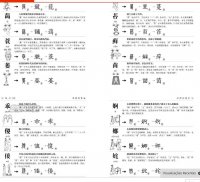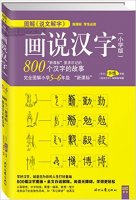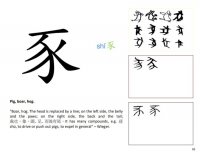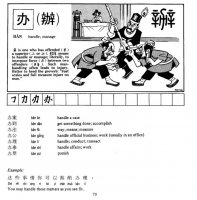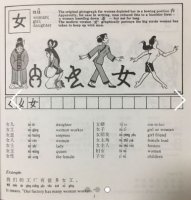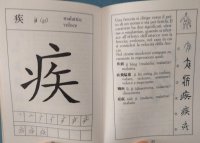Hello!! Thanks again... as a Professor, when you have e time, would you, please if is it possibel from pinyn we can write caracters and viceversa?.. polease, see the following question ?.... ..
FROM PINYN SOUNS ARE WE ABLE TO WRITE CARACTERS AND FROM CARACTERS ARE WE ABLE TO SPEK THE PINYN?
Good morning, Mr Pietro.Could you see it below and tell me if it is right?
Every beginner student, I believe, wants to know the sounds, how to write, grammar, etc. of a new language.
In the case of Mandarin, will it be that:
1) Is it possible for the writing ideogram from the phonetics of pinyn?
@The Chinese learn that nü is female and writes 女
@ The Chinese learn that the person is a person and writes 人.
In this way, every time he later sees 女, he will know that the Sound/Pinyn is nü, and he will write 女 and know that it is something relative to the feminine, as in
(Miss) and then, if he sees if the first radical of a word is 女, it will always speak nü (and something else, in this case, shi = 士) will be referred to 'lady or miss” , due to nu + shi = will write 女士? …Is it more or less like this? Or is it always like this?
It seems to occur with other piniyn and ideograms .. let's see below?
Girlfriend >>>> 女朋友 >>> nüpengyou Daughter >>> 女儿 >>. Nü'er¬
Soprano (woman / female singer) >>>> 女 高音 >>> nǚgāoyīn
2) Then, the reasoning, inverse will be true / ... for example, of the pinyn the Chinese will write the ideogram? .. will more or less so?
nüpengyou >>> 女朋友 >>>> Girlfriend nü'er¬ >>> 女儿 >> Daughter
nǚgāoyīn (I.e. >>>>> soprano (woman / female singer)
Is it more or even this?
3) So if we learn and decorate major radicals and pinyns, theoretically by addition, will he be able to write and read in Mandarin and vice versa? ... is it correct?
4) If not, could you give an example of two words that are not?..Why?
4) But then to know why nü is written 女, is an evolution , another history, isn”t it?... hence the characters are type ideogram, pictographic, etc ..... correct?
Thanhs again. From your student, Newton Schittini

